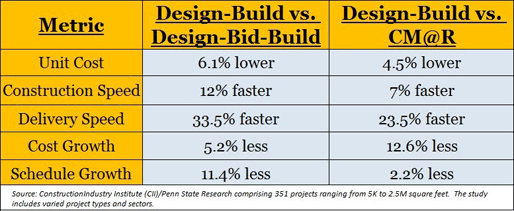by Geoff Corey | January 28, 2014
This weekend, the Super Bowl comes to MetLife Stadium in East Rutherford, N.J. The stadium choice is noteworthy for two reasons. Not only is it the first open-roof stadium in a northern city to host the Super Bowl in decades, but the project was successfully delivered using design-build project delivery. In fact, the design-build team, led by Skanska USA, won a 2011 National Design-Build Award from DBIA. The stadium was a massive project with lots of challenges, but design-build project delivery helped ensure it was delivered on-budget and a full five months ahead of schedule.
MetLife Stadium serves two National Football League teams, the New York Giants and the New York Jets. Initially, the two teams planned individual stadium projects, but came together in 2005 to form an unprecedented joint venture. At the time, the New York market was experiencing price escalation upwards of 12 percent a year, so the owner needed a delivery method that could potentially finish the project early. Design-build was undeniably the best project delivery method given that necessity.
“The collaborative nature of a design-build team is the best way this project could have been delivered given its size and complexity,” said Lisa Washington, Executive Director and CEO of DBIA. “The owner was really two team owners [Jets and Giants] who came into the project with different ideas and different mindsets. By having the designer and builder working together from the beginning, and a single point of contact throughout the project, you can work through those differences more easily.”
Five months before the scheduled completion date, Skanska was able to cut the opening ribbon, and welcome guests for football games as well as soccer matches, concerts and collegiate sporting events. (Some DBIA staff enjoyed a sneak preview before the grand opening.) The stadium includes 217 suites, 82,500 seats (each with an unobstructed view of the playing field), 16 elevators, 38 escalators, 79 concession stands, more than 1,000 beer taps and four 27 by 113 feet video boards. The 2.1 million-square-foot stadium contains 25,000 tons of steel and came in right on budget at $1.5 billion, all while partnering with the Environmental Protection Agency to be one of the most energy-efficient stadiums in the United States.
Just like the teams from Denver and Seattle didn’t make it to the Super Bowl without practicing, design-build projects are even more successful when team members have DBIA Certification or training. In fact, many of those working on the project were trained in Design-Build Best Practices by DBIA. By the time the stadium opened, the National Football League had chosen it as the official site of Super Bowl XLVIII. Hosting this prestigious event will bring improved community services to the New York Metropolitan area and inject over $500 million into the local economy. At DBIA, we’re so proud that design-build project delivery contributed to the success of this project, and look forward to cheering on the best team this Sunday, although we don’t give an award for most collaborative football team.
For more information from Skanska USA, check out their blog post here.

